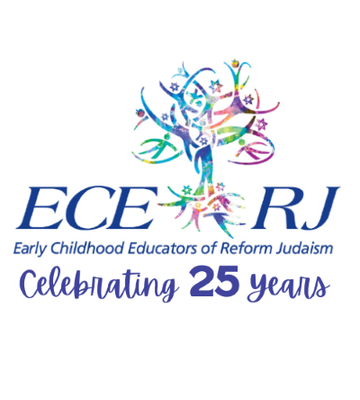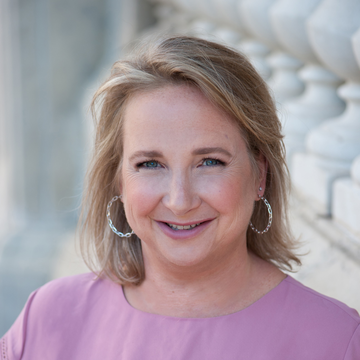There is a little book called Dear God: Children’s Letters to God by David Heller that I always think of at this time of the year as we read about our Biblical ancestors’ enslavement in Egypt and their path to freedom. Originally written by Heller in 1987, these brief letters, written by children ranging in age from 6 to 12 from various religious and cultural backgrounds, emerged from Heller’s research on children’s religious and moral development.
Dear God: Thank you for my baby brother. But what I really wanted was a puppy. Joyce.
Dear God: Maybe Cain and Abel would not kill each other so much if they each had their own rooms. It works with my brother. Larry.
Dear God: We read in school that Thomas Edison made light. But in Sunday School, they said that you did it. I bet he stole your idea. Donna.
As we join as one this morning in Memphis, representing two professional organizations, the ARJE and the ECE-RJ, we are all bound by our everyday work with children and our desire to be both learners and teachers of Torah. In this week's Torah Portion, Beshalach, the Israelites finally leave Egypt, and eventually, they come up against the Reed Sea. Having changed his mind about letting them go, Pharaoh pursues them with horses and chariots. The people come close to despair and imagine their end would come soon. Then, in one of the supreme miracles of history, the sea divides. The Israelites passed through and, led by Miriam, the prophetess, sang a meaningful song of freedom, faith, and deliverance.
Our sages ask why the Israelites deserved to be saved in such an extraordinary manner, and the sages answer that it was because of the Israelite children, who were a significant part of the multitudes that came out of Egypt. In tractate Sotah, the Talmud records that the children who left Egypt were the first to recognize God. This is a puzzling statement. After all, the nation that left Egypt included the great spiritual giants Moses, Miriam, Aaron Joshua, and all the elders of Israel. Yet, according to the sages, these famous ones were not the first to recognize God; it was precisely the children — children born and raised amid Egyptian oppression. Nevertheless, our sages proclaim that the children received a fitting and proper education, which imbued them with the ability to recognize God. The Torah even hints that the children, as they crossed, could point with their fingers, saying, "This is my God, whom I will glorify."
Together this week, we are taking the ideas of slavery and freedom – echoed in this week’s portion and the complicated US history we are surrounded by in Memphis and moving one step further into belonging. It is not enough to be free – we need to be seen, recognized and celebrated as individuals in the community.
Joe mentioned a moment ago that the children who left Egypt were the first to recognize God. As teachers, we can take comfort in explaining that their “proper and fitting education” allowed them to do so. But, as experts in child development and childhood, we can also embrace that their boundless imagination will enable children to see the world in a way that is sometimes more challenging to do as adults. The shoulds, the musts, and the can’ts, do not confine children. Their conception of belonging is not marred by preconceived notions or by prejudice or fear; in many ways, they see things more clearly and authentically than we can.
What if, over the next three days together, we can adopt that lens, that clarity, and that innocence? What if we could put aside our own definitions of what belonging means, put aside our concept of who ARJE is and who ECE-RJ is, and approach it all anew? While belonging is something we’ve grappled with for a long time – as educators, as organizations, and as a movement, what would it take to forget (or at least put aside) all of that learning and start together from zero? To build an approach that breaks down the barriers that have separated us and opens up our communities in ways we couldn’t have previously imagined?
In Early Childhood classrooms, our students are not burdened by the lanes they’ve been put in, the labels that other people have given them, or the boundaries of their specific position. Indeed, that gets more complicated as children get older, but in the beginning, they are free to be a superhero one day, an electrical engineer the next, and a puppy after that. In those moments, they are not just playing; they are constructing. Their concept of identity is still forming, and as such, they can experiment with who they are and who they are becoming. There are no lines around what they can and cannot be – and for the next three days, there are no lines around us.
The lesson from all this is that our work is interconnected, and we are stronger together. We are like the Israelites at the sea, singing Miriam’s song but not doing so as individual tunes but rather as communal music. And if one wishes to be truly blessed, both materially and spiritually, including nachas from our students, then the way to that is through engaging our students and their families in meaningful and relevant Torah education. What we have in common is how our strengths can strengthen each other, and from our time together, we can and will produce young adults with a sacred life filled with energy and vitality in Judaism when they go to synagogue and throughout their lives. That is our joint mission as Jewish educators and what binds us in our daily labors.
Dear God: I didn't think orange went with purple until I saw the sunset you made on Tuesday. That was cool!
Lisa Samick, ECE-RJ President
Rabbi Joe Eiduson, RJE, ARJE President


